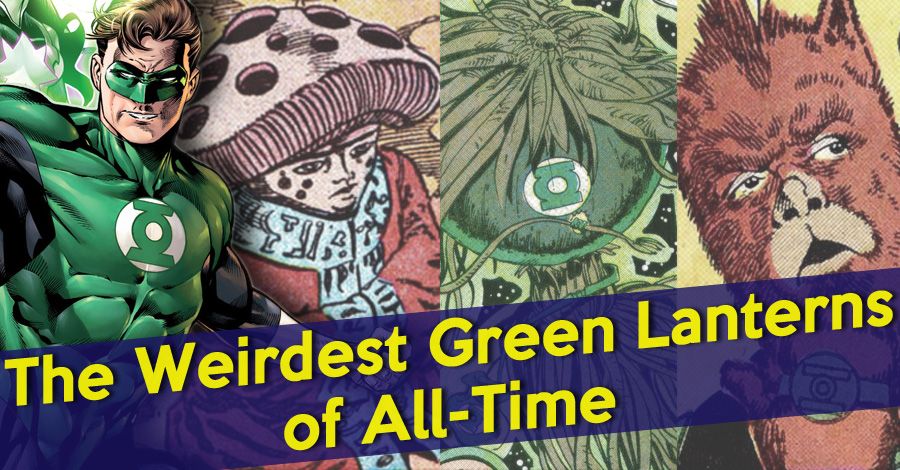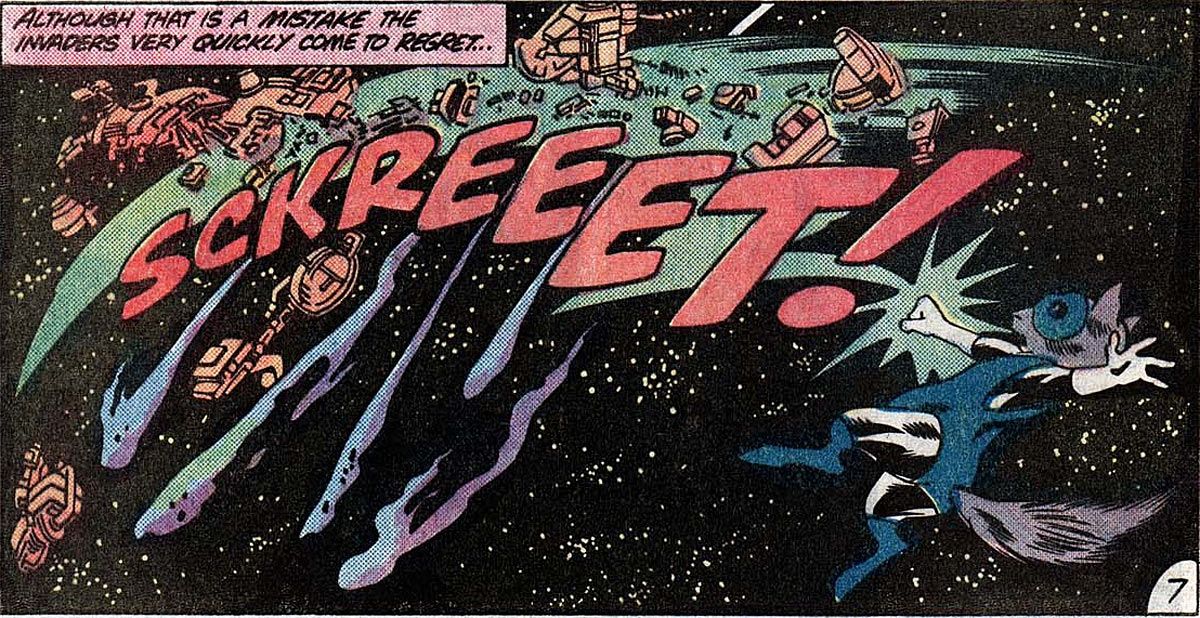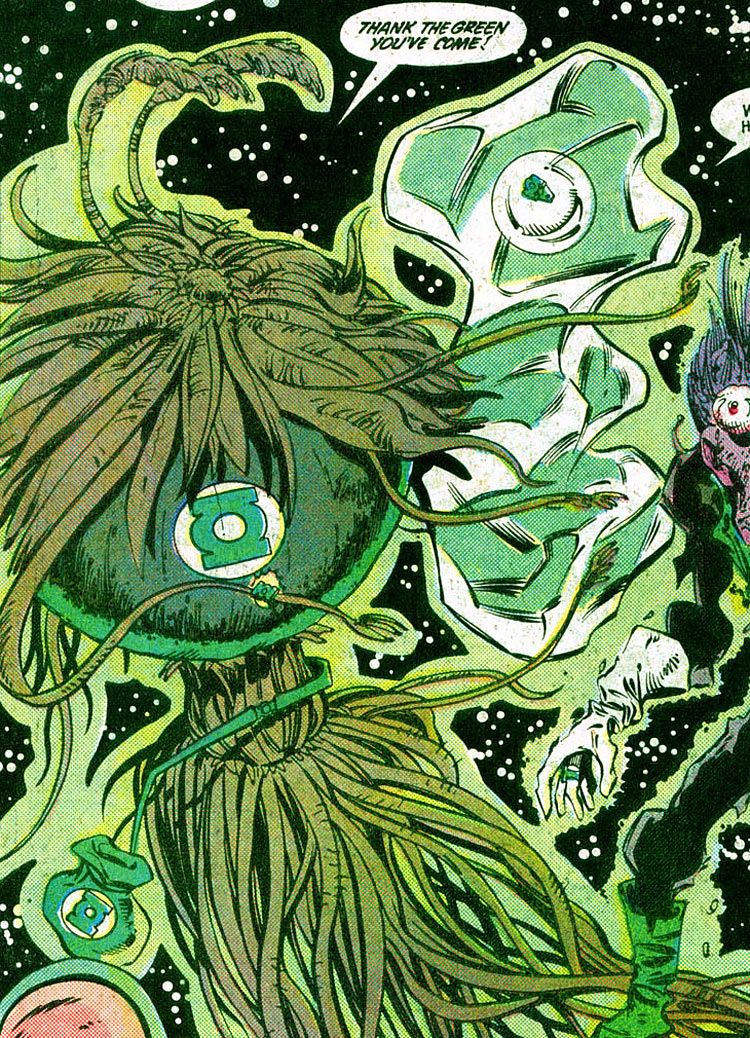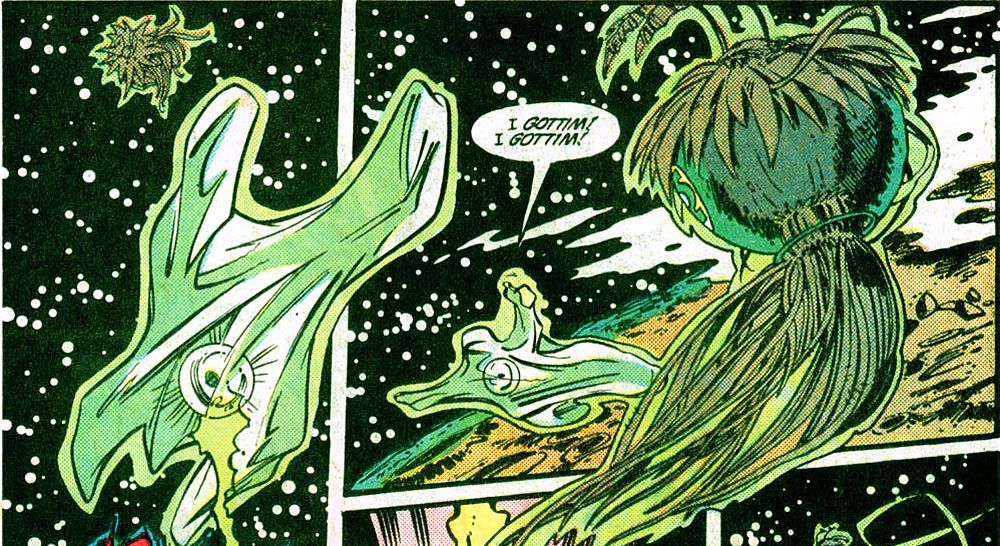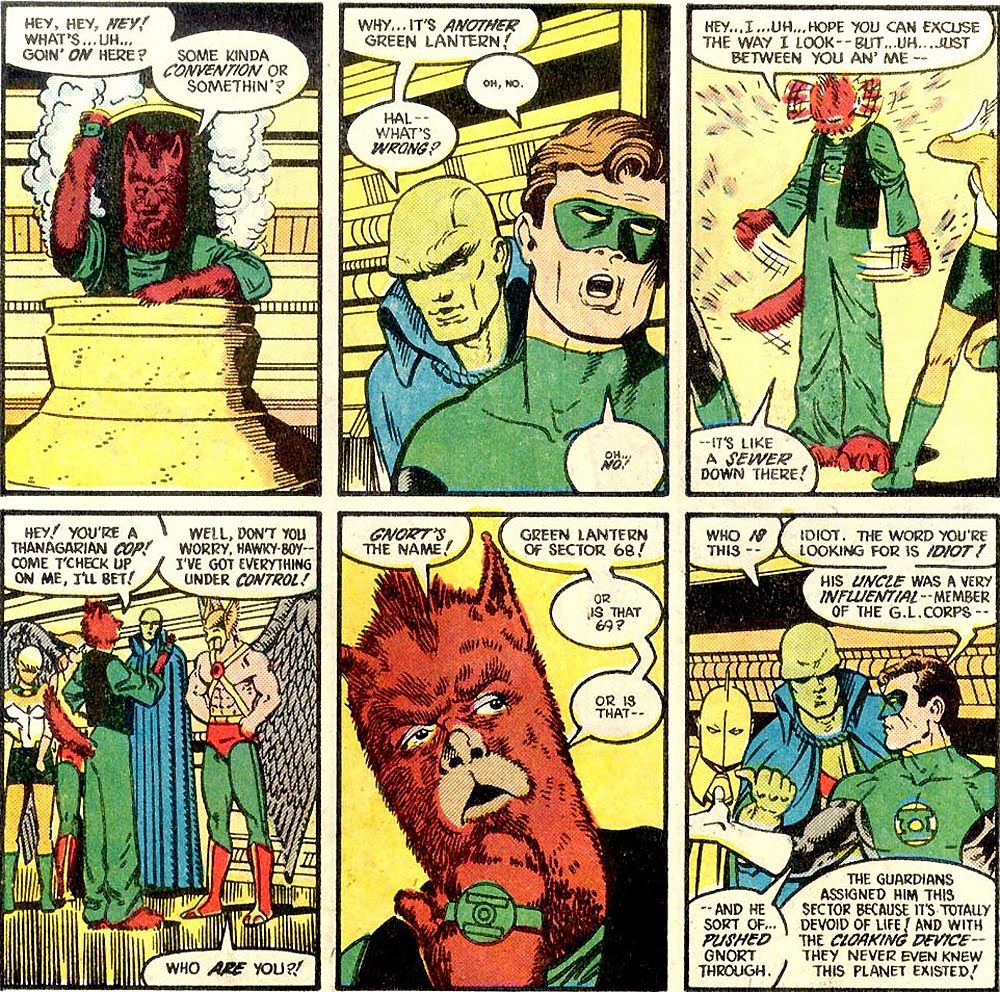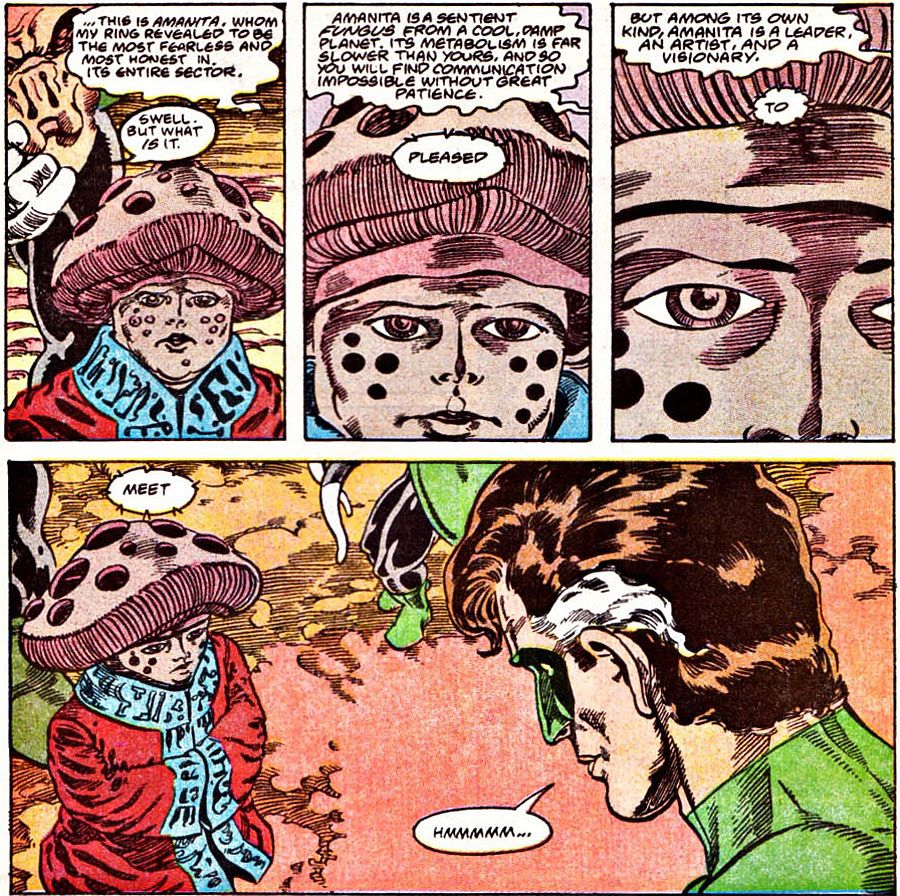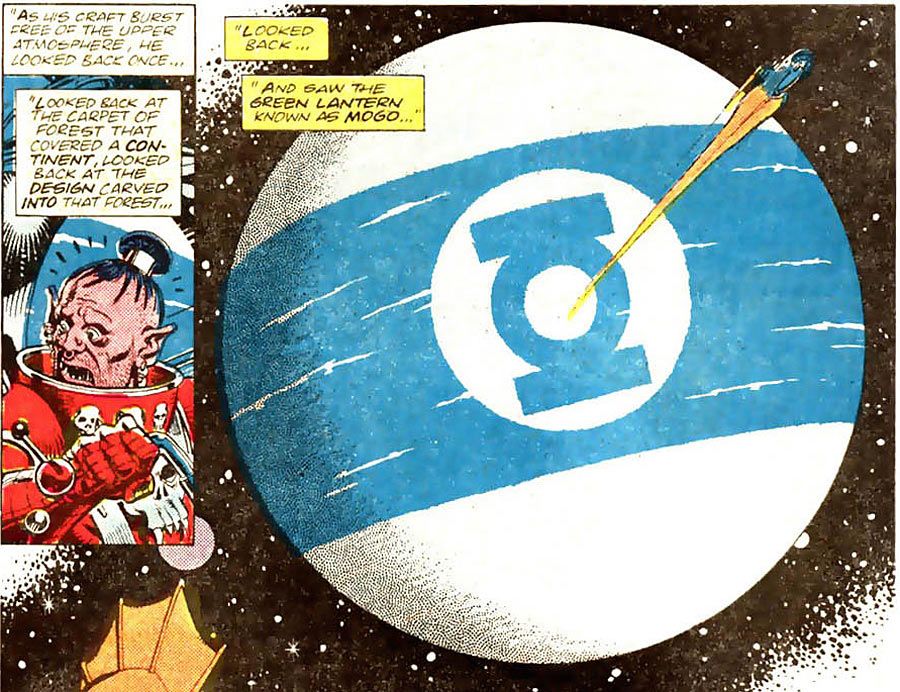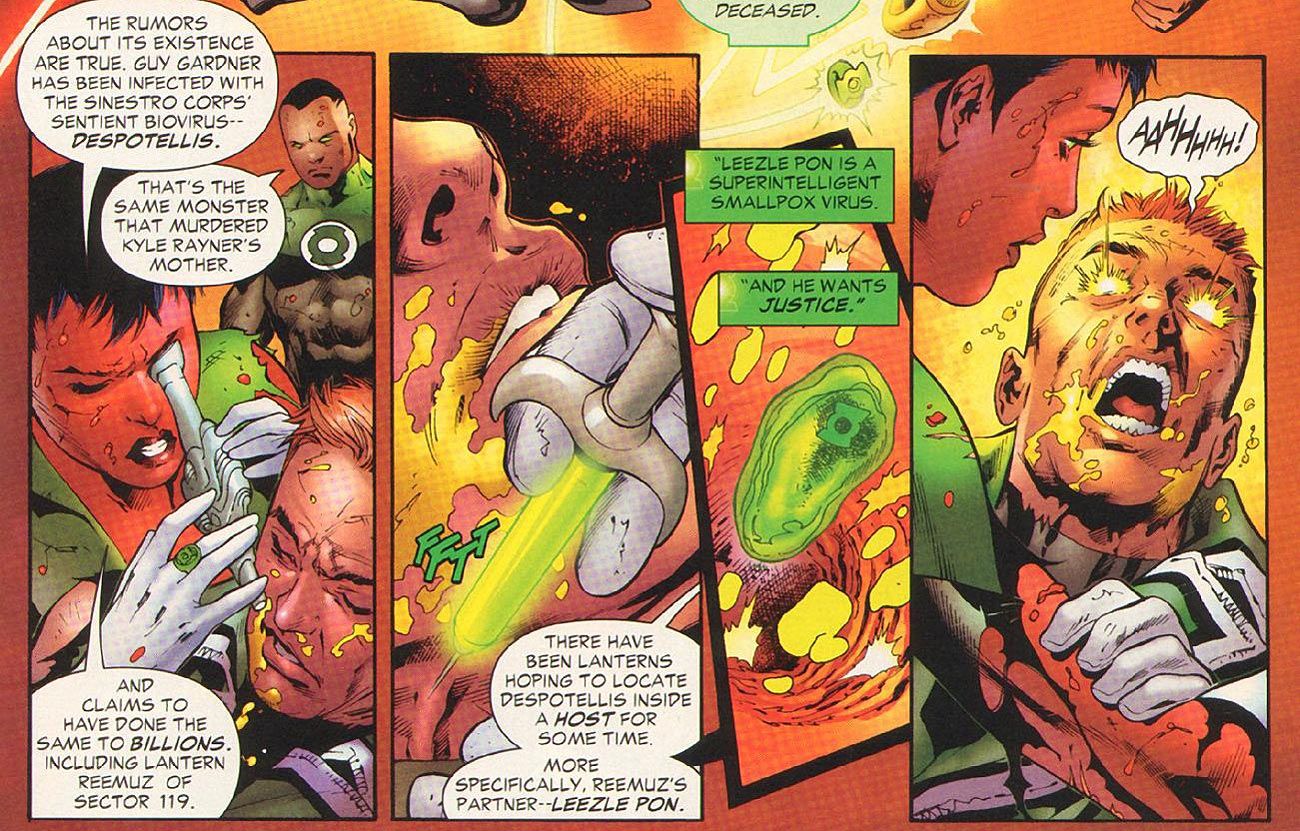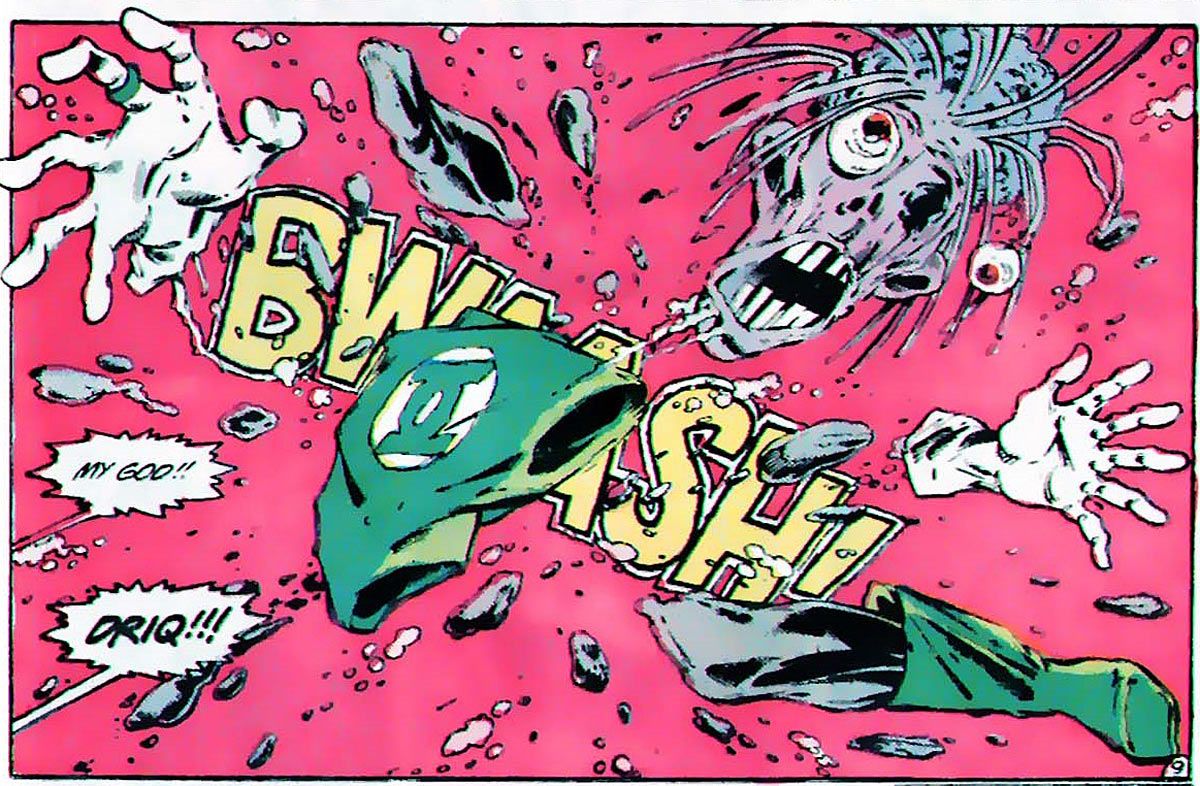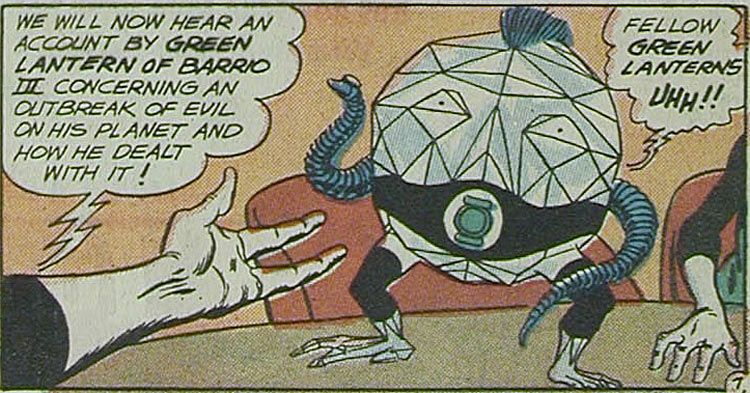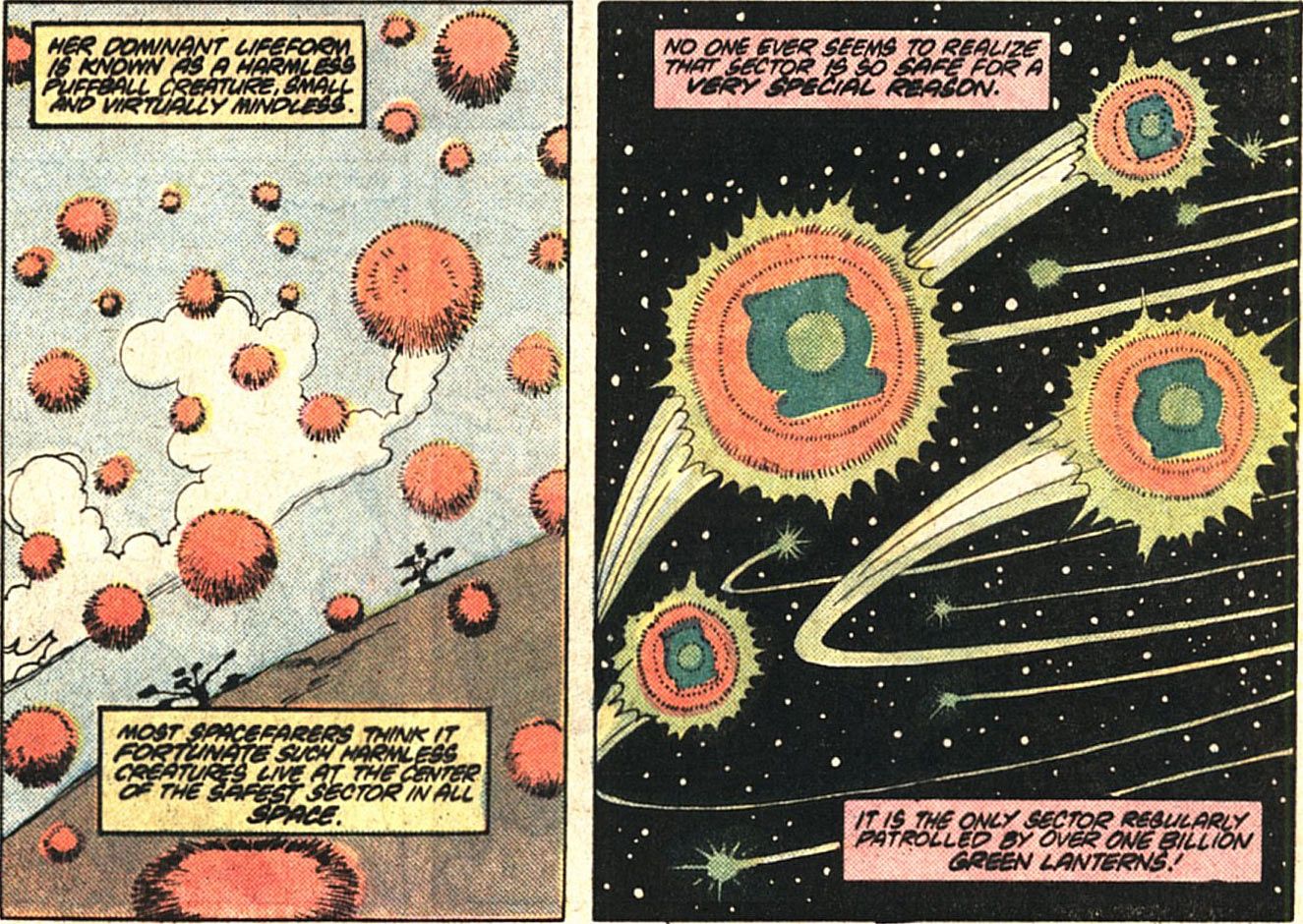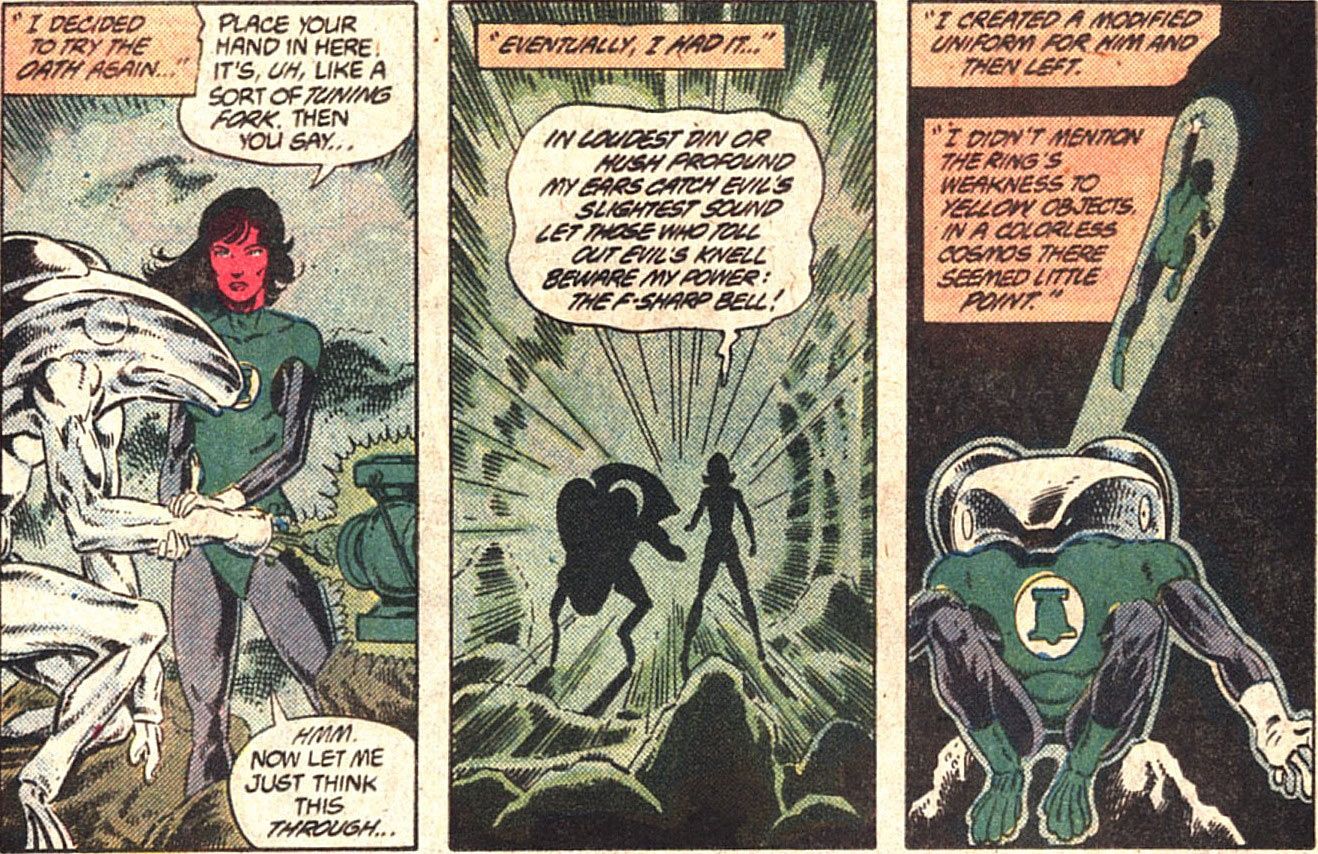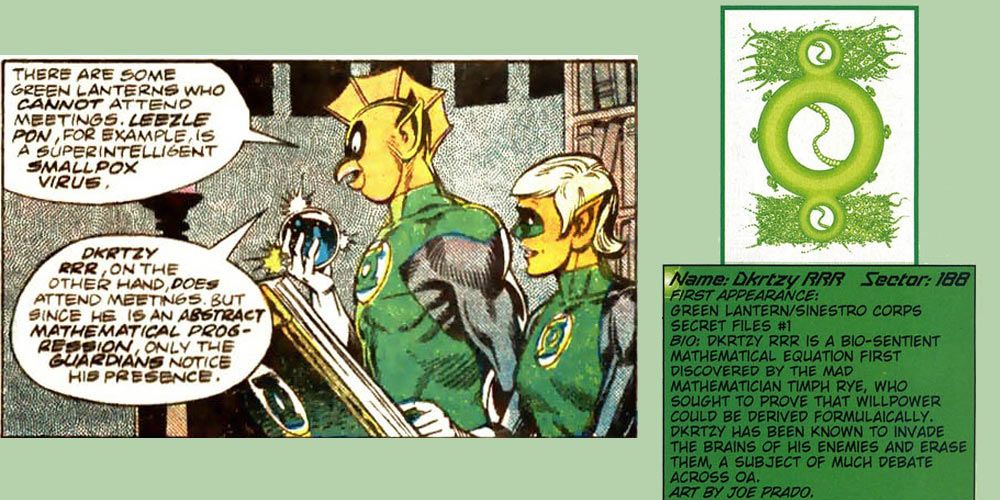DC Comics' Rebirth has done two things to make long-time Green Lantern fans happy: It brought Hal Jordan back to being a Green Lantern as well as bringing back the Green Lantern Corps, period, who were missing for some time during the publisher's New 52 era. Their new adventures will take place in the bi-monthly title "Hal Jordan and the Green Lantern Corps." Now that the Corps is back together, we can look forward to what kind of interesting new Green Lanterns future creators will add to the Corps. One of the constants over the 50-plus year existence of the Green Lantern Corps is that comic book writers and artists will always try to think of creative new additions to the group.
RELATED: Untangling the Continuity Behind "Hal Jordan and the Green Lantern Corps" #1
The Green Lantern Corps' purview is the entire universe, and a result, there are those little nooks and crannies of the DCU where the weird and bizarre live -- and those beings need protection, too. Like the other sectors, they get their own representative in the Green Lantern Corps. That's only fair, but it ends up resulting in plenty of really odd members of the Corps. Here, then, are the 12 oddest members of the Green Lantern Corps (unsurprisingly, a full third of the list was created by Alan Moore)...
12 12. Ch'p
Introduced in 1982's "Green Lantern" #148 in a back-up story by Paul Kupperberg, Don Newton and Dan Adkins, Ch'p was one of the bravest Green Lanterns there ever was. He also happened to be, basically, a talking chipmunk. As a bit of a rarity for the characters on this list, Ch'p actually got to participate in a number of major Green Lantern Corps adventures as a regular member of Hal Jordan's extended supporting cast. Sadly, tragedy seemed to follow Ch'p around closely. After the events of "Crisis on Infinite Earths," Ch'p was one of the few people left remaining who saw his immediate history altered -- his wife was no longer his wife. He decided to travel to Earth where the other remaining Green Lantern Corps members were residing (following a temporary dissolution of the Corps), but was distraught to learn that the chipmunks on Earth and their kind did not possess his level of sentience. He returned to his home planet depressed; he even considered suicide. He was luckily saved by his old friend Salaak, who informed him that the Corps was reborn. Sadly, Ch'p was then soon after killed by a yellow tractor trailer while serving on Oa, likely having to do with Sinestro secretly controlling Ch'p's friend, John Stewart.
11 11. Olapet
Another side-effect of "Crisis on Infinite Earths" was that the Green Lantern Corps no longer had to maintain specific sector assignments. Green Lanterns were allowed to patrol the universe as they saw fit. Many of them continued to maintain their then-current assignments, while others tried different arrangements. One somewhat popular idea was to form a "team" of Green Lanterns, a division of the Corps, as it were. The Green Lantern Corps of The Klyminade was one of these such divisions. They found themselves unexpectedly trying to fight Sinestro himself and things did not go well. They luckily came across some of the top Green Lanterns in the Corps (John Stewart, Kilowog, Katma Tui and Arisia) and the heroes fought back against Sinestro together. Olapet was a fascinating being -- she was a plant form that contained its "daughter" in a seed in a bag around her body. Whenever she would be killed, the Green Lantern ring would transfer to her daughter. So long as her seed was protected, then, she was effectively immortal. Olapet debuted in 1987's "Green Lantern Corps" #217 by Steve Englehart, Joe Staton and Mark Farmer.
10 10. Flodo Span
Another member of the ill-fated Green Lantern Corps of The Klyminade who debuted in "Green Lantern Corps" #217 (by Steve Englehart, Joe Staton and Mark Farmer) was Flodo Span. Flodo Span was one of the most remarkable Green Lanterns because he/she/it was essentially devoid of an actual corporeal form, but he/she/it was so brave that it still warranted membership in the Green Lantern Corps, at which it literally created its own body through an expanding, bag-like suit. During the battle with Sinestro, Flodo Span was forced to expand itself to take control of Sinestro's ally, a sentient piece of the galaxy itself. However, for that plan to work, Span had to expand to the point where it almost lost its own sanity. Luckily, one of Flodo Span's teammates brought Span back to its senses. Tragically, though, Span died while investigating the malfunctioning central Green Lantern battery alongside Hal Jordan.
9 9. G'nort
G'nort debuted in the pages of 1987's "Justice League International" #10 by Keith Giffen, J.M. DeMatteis, Kevin Maguire and Al Gordon as part of the "Millennium" crossover. Initially introduced as a member who got his gig in the Green Lantern Corps due to nepotism, Giffen and DeMatteis would use G'nort a number of other times during their time writing "Justice League International/America," as G'nort's incompetence mixed with his sheer earnestness made him a lovable and hilarious addition to the title. Eventually, Gerard Jones successfully worked G'nort's origins into the regular Green Lantern Corps by establishing that G'nort didn't have a real Green Lantern ring, but after proving himself, he did get a real ring. G'nort went missing for many years before finally returning as a Green Lantern during Geoff Johns' final storyline on "Green Lantern." Giffen and DeMatteis revisited the character by having him show up in their "Larfleeze" comic, revealing that the two oddballs are related.
8 8. Amanita
When the Green Lantern Corps was restored again in 1991, Hal Jordan and his fellow remaining Lanterns spread out to recruit new members. One of these new members was Amanita, named after the mushroom Amanita muscaria. Amanaita was a brilliant being, blessed with a special sort of "cosmic awareness" (what that exactly meant was never precisely explored). However, due to her particular constitution, she had difficulty expressing her thoughts to other beings in a way that others were accustomed. It would take her five minutes to say "Pleased to meet you." When Hal Jordan destroyed every Green Lantern ring after the events of "Emerald Twilight," Amanita was luckily one of the Green Lanterns who survived. Not so luckily, though, she was one of a group of former Lanterns that were captured and traded into slavery. Former Green Lantern Guy Gardner, then calling himself Warrior, rescued Amanita and the other Lanterns. When the Green Lantern Corps was restored once more following "Green Lantern: Rebirth," Amanita returned to the fold.
7 7. Mogo
One of the odd things about odd characters is that if they last long, we all get so used to them that they don't seem all that odd anymore. Mogo, for instance, has been such a constant presence in the "Green Lantern" titles for so long that it is easy to forget just how weird he is. Introduced in a back-up story in 1985's "Green Lantern" #188 by Alan Moore and Dave Gibbons, readers first met Mogo when Tomar Re told Arisia the story of a killer, Bolphunga the Unrelenting, who sought to kill Mogo. After a few weeks on a mysterious planet trying to find Mogo to no avail, the Bolphunga discovered the truth -- the planet was Mogo! Yes, Mogo is a living planet who is a member of the Green Lantern Corps. That's amazing, but it's also pretty darn odd.
6 6. Leezle Pon
In the same 1985 "Green Lantern" #188 back-up story that introduced Mogo, Alan Moore and Dave Gibbons also introduced two other Green Lanterns, as simple asides to Arisia by Tomar Re of other notable Green Lanterns. One of those Green Lanterns was Leezle Pon, who was a super-intelligent smallpox virus who was also a Green Lantern. Pon did not actually appear in the story and would not appear in a comic book, period, until 2007's "Green Lantern" #25 by Geoff Johns, Ivan Reis, Ethan Van Sciver and Oclair Albert. You see, that issue was the culimination of "The Sinestro Corps War," the battle between the Green Lanterns and their evil counterparts, led by Sinestro (naturally). One of the members of the Sinestro Corps was a living virus named Despotellis. Despotellis previously killed Kyle Rayner's mother and then infected Guy Gardner. Gardner bravely fought on even while being killed from within, but then Soranik Natu showed up with an injection of Leezle Pon, who defeated Despotellis and saved Guy's life.
5 5. Driq
Another member of the ill-fated Green Lantern Corps of The Klyminade who debuted in "Green Lantern Corps" #217 (by Steve Englehart, Joe Staton and Mark Farmer) was Driq. As noted earlier, when the Green Lantern Corps of The Klyminade came across Sinestro and his ally, the sentient piece of galaxy, the Corps was torn apart. Of their original eight members, five were killed right away. However, by all rights, that number should have been six. Driq was killed in that initial battle, but through some weird glitch in the interaction between his Green Lantern ring and his body chemistry, his ring would not let him die. He kept exploding and being torn apart, but the ring kept putting him back together, despite his brain function being next to zero. He continued to serve the Corps in his sort of weird half-death state until Sinestro managed to destroy the Central Green Lantern battery (after the Corps had killed him, his energy managed to survive and take over the battery). Most Lanterns lost power to their rings instantaneously. Driq was one of them and without his ring, there was nothing keeping him alive. He died instantly.
4 4. Chaselon
Chaselon gets extra credit because while he was designed to be odd just as much as these other Lanterns were, he was designed in 1961, in one of the very first appearances of the Green Lantern Corps, so writer John Broome and artist Gil Kane had very little guidelines when it came to coming up with weird Green Lanterns. That they were able to come up with one as odd as a talking crystalline creature that used a wig and robotic arms to make it seem normal to humanoids is very impressive. Chaselon became a steady member of the Green Lantern Corps as soon as he debuted in "Green Lantern" #9, and whenever there were group meetings Broome and Kane made sure to include Chaselon. When "Emerald Twilight" took place, Chaselon was one of a group of Green Lanterns that were captured by the Cyborg Superman and used to power up his new take on Manhunters. Chaselon was freed and returned to the Green Lantern Corps where he became one of the Alpha Lanterns, the sort of internal affairs division for the Green Lantern Corps. He was then killed during "Blackest Night."
3 3. The Puff Ball Collective
1987's "Tales of the Green Lantern Corps Annual" #3 has two of the top three oddest Green Lanterns on this list. The first appeared in a story written and drawn by John Byrne, with inks by Kurt Schaffenberger. It dealt with a Green Lantern who was sent to a planet to recruit a new Green Lantern for that sector. It appeared as though there was no one there, but that's when the Green Lantern discovered that a little puffball that blew by possessed a tiny bit of sentience. The Green Lantern continued on to note that each of the little puff balls that existed on the planet had a teensy bit of sentience. Thus, when they were combined together, they had enough sentience to power a Green Lantern ring. The collective, then, got a ring to share amongst themselves. The only Green Lantern ring worn by billions of little entities!
2 2. Rot Lop Fan
Earlier in that same 1987 "Tales of the Green Lantern Corps Annual" #3, in a story by Alan Moore, Bill Willingham and Terry Austin, Katma Tui sought out a new Green Lantern recruit. She ventured to a part of the galaxy that was sheer blackness. While there, she met Rot Lop Fan. Fan was not only blind, but he had no conception of color in the slightest, so he proved to be a difficult addition to the Green Lantern Corps, as he did not even have a word in his language for "green." Katma, though, thought quickly on her feet and came up with the idea to use an audio approach to the Green Lantern Corps, with the sound of a bell replacing the Green within the Corps. Rot Lop Fan then became the F-Sharp Bell, complete with a very clever new oath created by Moore:
In loudest din or hush profound,
My ears catch evil's slightest sound.
Let those who toll out evil's knell
Beware my power, the F-Sharp Bell!
That's pretty amazing. Odd, but amazing.
1 1. Dkrtzy RRR
The last Green Lantern from the 1985 "Green Lantern" #188 back-up story by Alan Moore and Dave Gibbons was Dkrtzzy RRR, who is one of the rare Green Lanterns who has never actually appeared within a "Green Lantern" comic book story. You see, Dkrtzy RRR was an abstract mathematical progression instead of a corporeal being. Only the Guardians can see Dkrtzy RRR. While the character has yet to actually appear in a comic book, in 2007's "Green Lantern Sinestro Corps War Secret Files" #1, we at least got a look at what Dkrtzy theoretically looks like, in a Who's Who entry drawn by Joe Prado. That same entry gave the origin of Dkrtzy, which is that it was created by a mad mathematician Timph Rye, who tried to prove that willpower could be derived formulaically. There's nothing that cane be any odder of a concept for a Green Lantern Corps member than that!
Did your favorite odd Green Lantern make the list? Will a new Green Lantern be introduced in "Hal Jordan and the Green Lantern Corps" that will make a future version of this list?

